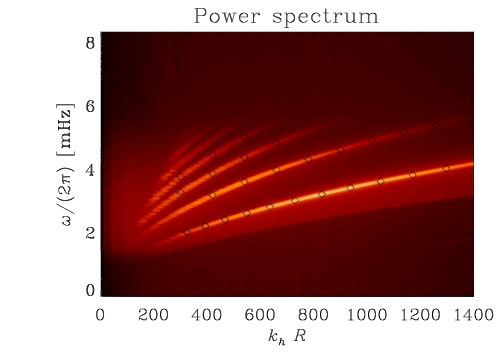Solar Acoustic Simulator: Applications and Results
Hanasoge & Duvall (2007), Astronomische Nachrichten, 328, 319
Forward Modeling In Helioseismology: Sensitivities, Realization Noise Subtraction And Kernels
Hanasoge, Duvall, & Couvidat (2007), Astrophysical Journal, 664, 1234
Impact of Locally Suppressed Wave Sources on Helioseismic Travel Times
Hanasoge, Couvidat, Rajaguru, & Birch (2008), Monthly Notices of the Royal Astronomical Society, 391, 1931
Theoretical Studies of Wave Propagation in the Sun
Hanasoge (2007), Ph.D. Thesis, Stanford University
Seismic Halos Around Active Regions: A Magnetohydrodynamic Theory
Hanasoge (2008), Astrophysical Journal, 680, 1457
An absorbing boundary formulation for the stratified, linearized, ideal MHD equations
based on an unsplit, convolutional perfectly matched layer
Hanasoge, Komatitsch, & Gizon (2010), accepted, Astronomy & Astrophysics, arXiv, 1003.0725
The CODE can be downloaded from THIS LINK.
The documentation in PDF form is HERE.
A code to compute source functions to drive simulations with pseudo-randomly excited waves can be downloaded HERE.The background model must be convectively stable. The points at which the grid are sampled are typically
distributed according to the criterion that the points per wavelength be maintained roughly constant with depth.
Here are a set of routines to compute the appropriately sampled background models (for a polytrope with
an
isothermal atmosphere; and for the altered model of Hanasoge et al. (2006) ):
Various IDL codes
Here are a couple of sample models, ready for use:
Altered form of model S
Polytrope with isothermal atmophere
To compute the power spectrum and collate the output, use this.
To compute the magneto-hydrostatic (MHS) state for given flux, tube size, and background model;
we apply
the self-similar Schluter-Temesvary technique, use this IDL code.
Note that this code can also be used to convert
a cylindrical co-ordinate description of an MHS state to Cartesian co-ordinates.
The following two libraries are required to compile and run the code in its current form:
FITSIO
FFTW
The message passing routines are written in accordance to OpenMPI.

Many thanks to D. Dombroski (CORA), H. Schunker (MPS), H. Moradi (MPS), for being patient
and assisting significantly in debugging the code.
A. Birch (CORA), R. Cameron (MPS), and
L. Gizon (MPS) have been very helpful and supportive.
If you encounter bugs or have any comments, feel free to email me.